
Beretta Models
This page serves as a reference on how to identify the different Beretta models that exist.
The Beretta first rolled out for the 1987 model year as rental fleet cars only. They were not sold the public at all until the rental companies were done with them. There were no GT's from that year (despite what you may hear from other people). There were only "bases" (term for a car that's not a special model such as the GT, GTZ, etc.)
Beretta CL

1988 CL - Picture courtesy of Beretta.Net
In 1988, there was an interior package called the CL which was designated by a "CL" badge on the side of the car. From the outside, the car was not different from the base except that CL's came in two-tone paint jobs a lot of the time (although that is not limited to CL's)
Beretta GT
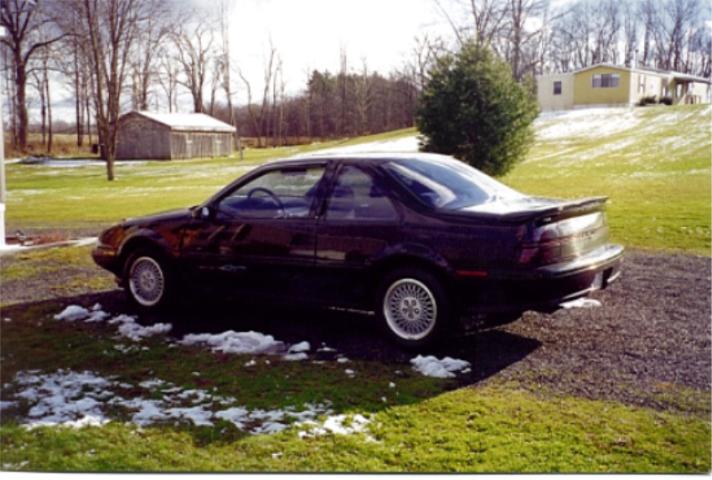
Picture courtesy of Beretta.net
The first special model of the Beretta was the GT. First issued in 1988, it was not all that different from the base, but it had its own set of characteristics. The easiest way to discern a GT was the badging. On 1988-1990 cars, the badging was located behind each door above the trim stripe mid-way up the door. On 1991-1993 models, there was a "Beretta GT" decal on the lower half of each door. The decal's color differs by car, but it always has the same design. The GT ran from 1988 to 1993. 1988 GT's had Generation II 2.8 V6 engines that included a MAF sensor on the intake. In 1989, the same exact engine was used, but the MAF sensor was eliminated from the intake...mostly because it robbed 5 horsepower from the car's performance. 1988 horsepower rating was 125 hp with 165 ft/lb's of torque. 1989 had the same torque rating but had 130 hp. 1990 saw the advent of the 3.1L V6. This engine is almost identical to the 2.8. The intake plenum is even identical (except for the 3.1L Multiport emblazoned on the top). Biggest difference was the stroke. As such, the 3.1 fetched a better horsepower and torque rating.
Beretta Z51 GT
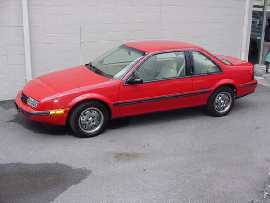
Picture courtesy of Beretta.net
In 1988, the Beretta GT could be had with a special suspension package. Under normal circumstances, the best Beretta suspension of 1988 was the FE3. The Z51 augmented the FE3 with better bushings and a 20 mm sway bar on the rear. It was by far the best suspension seen on an L-body (Corsica/Tempest being the only other L-body) until the FE7 came around (in 1990). The Z51 came with its own 15" steel rims. The rims are a dead giveaway for a Z51 in almost every occurrence. One note to add is that the rims were optional in 1989 and 1990, but the 1988 rims had a charcoal color to them and the 1989 and 1990 Z51 wheels were much more metallic. 1989 and 1990 Z51-wheeled cars do not have the sway bar/bushings unless the owner has added them him/herself.
Beretta W26 GT
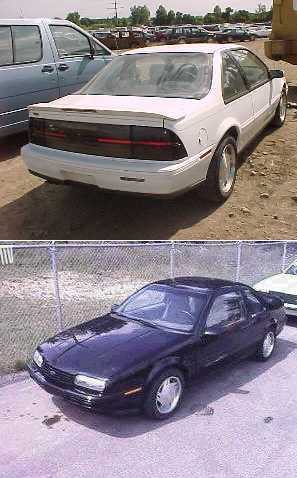
Picture courtesy of Beretta.Net
There is one other special GT model. In 1992, the GT, for one time and one time only, could be bought with the elusive FE7 suspension. Its only rival in the Beretta world was the FE3/Z51 combo (mentioned above) but on the front axle, it is unrivaled in stock form. The Z51's had almost equal rear-end handling capabilities. The W26 GT's are identified on the outside by a GT having rims usually reserved for GTU's and Indy's. The hidden allure of the W26 was the FE7 suspension that GT's otherwise did not get. The only other cars that got the FE7 stock were GTZ's and Indy's. The W26 GT was issued in 1992 only. It had the normal GT bading mated with the GTU rims, but it had stock body moldings on the bottom of the car's sides, and not the GTU/Indy ground effects.
Beretta GTU
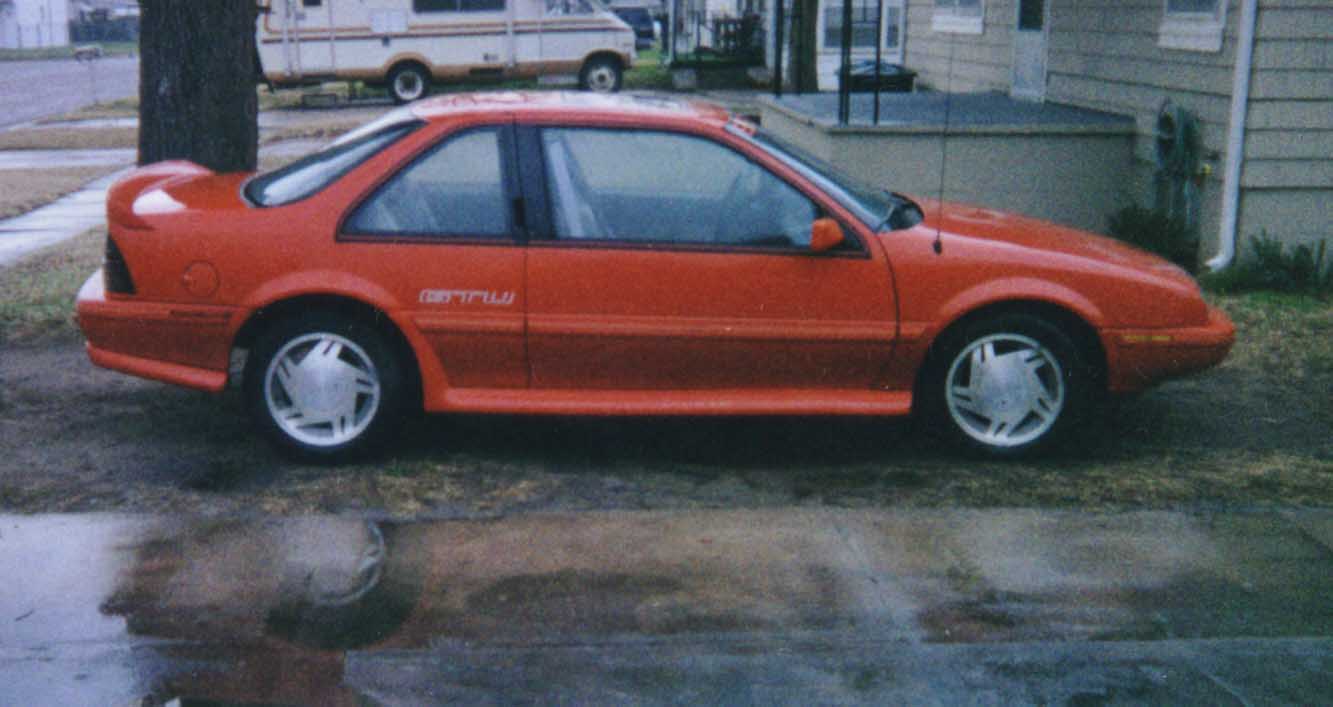
Picture courtesy Ryan Donovan - 1989 GTU
In 1988, a special edition of the Beretta GT was issued to commemorate IMSA driver Tommy Kendall. GM took factory GT's and had them outfitted with a special appearance package that included a spoiler (exclusive to the GTU), ground effects, mirrors, and badging. There were a total of roughly 13,000 GTU's in 1988 and 1989. They came with black, red, or white exterior paint only. The interior, however, was just like any other GT (except for the GTU badge on the dash). The GTU was strictly an apperance package. The GTU is a dressed up version of a GT...but it is rare. The GTU rims are 16x7 and came stock with P205/55ZR16 tires. GTU's had FE3 suspensions and 1988 GTU's had Z51 packages (the Z51 rims were not used...the GTU rims were). The 1988 GTU's are harder to come by, however. Approximately 3000 GTU's were sold as 1988's. The rest were sold as 1989 models.
Beretta Indy
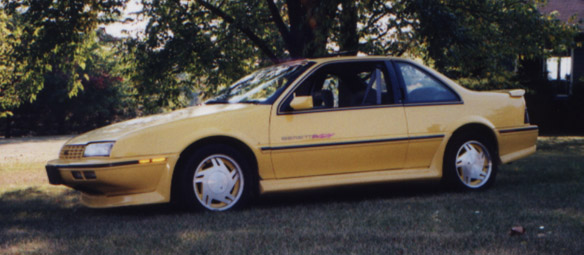
Picture courtesy Nathan Lora - 1990 Yellow Indy
In 1990, the Beretta was chosen as the pace car for the Indianapolis 500. To commemorate this event, 4500 replicas of the pace car were built for sale to the public. The two colors available were teal and yellow. Teals comprised 3000 of the Indys and the other 1500 were yellows. The elite Indy according to most people I've spoken with is the Yellow 5-speed. All Indys had the 3.1L V6 found stock in all GT's and some of the bases. The GTU and Indy are very similar, but have several very distinct differences. They start with the exterior color selection, of course. GTU's were red, black, and white and Indy's were yellow and teal only. The ground effects and rims (aside from yellow or teal accents on the Indy rims) were identical on both models, but the spoiler was the same spoiler you could get on just about any other Beretta (standard on GTZ's and Z26's). The wedge shaped GTU spoiler was used on the GTU and has not been used since. Another big difference was the introduction of the FE7 suspension. The Indy also received a customized interior with teal/yellow accents (depending on exterior color), but the interior was otherwise stock aside from the Indy badge on the dash.
Beretta GTZ
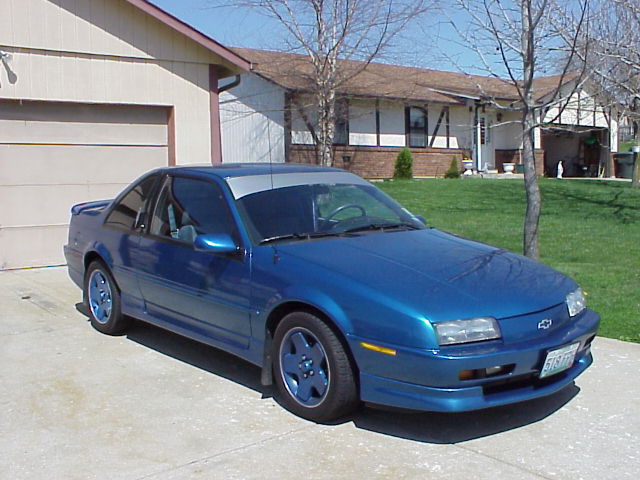
Picture courtesy Jen Palmer - 1993 GTZ
1990 also brought along the creme de la creme of Berettas if speed and handling is what you wanted. The GTZ brought Beretta enthusiasts the Quad Four 2.3L engine. It is called the Quad Four (Q4 for short) because it has 4 valves per cylinder (2 in and 2 out...which is double what other Beretta engines had) for a total of 16 valves. Nearly stock GTZ's have been seen breaking the fifteen second mark in the quarter mile (there is proof of this, btw). The GTZ got its own ground effects and interior. It also received sixteen inch body colored wheels, an FE7 suspension, and a choice of two engines. For those that didn't really think about speed, a 3.1L V6 w/ auto option was offered. The Quad Four came stock with a five speed stick. However, there are no 5-speed 3.1L GTZ's...nor are there any Quad Four automatics. The GTZ ran from 1990 to 1993.
Beretta Z26
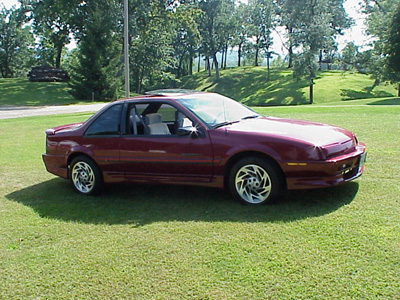
GT converted to Z26 - Picture courtesy Seth Kussmaul
After the GTZ had run its course, the Beretta took a noticeable turn away from performance oriented buyers. While the Quad Four was a very fast engine (pumping out 180-190 horsepower), it was also very problematic. One of the most notorious problems was premature head gasket failure. This brought the Z26. Z26's came one way and one way only. They came standard with the Generation III 3.1L V6 (aka the 3100). Just like the switch from the 2.8 to the 3.1, the actual engine internals were not changed much, but in the case of the 3100, multiport fuel injection was scrapped in favor of sequential fuel injection, the intake was changed, and the transmission was swapped with an electronic four speed automatic. The only exception to this combo was in 1994 when a few Z26's came with the Quad Four w/ five speed combo. They are rather hard to find. The 3100 never came with a 5-speed. The Z26 shared many characteristics with the GTZ. They used the same spoiler, ground effects, interior (although the color selection differed), and fog lights. The wheels were changed over to the "food processor blade" rims...also 16 inches. The Z26 ran from 1994 to 1996.
Why the Beretta was cancelled
There are a number of theories into this one...so I'll touch on them all. When the Beretta first came on the market, it was rumored to basically be a "baby Camaro". It's well known that the low-end Camaros are V6 cars and if you take a Beretta and 88-92 Camaro and compare them, you'd start to see why people thought that at the time. The Beretta was in fact designed in the same studio as the Camaro...not to mention the Corvette as well. To anyone who believed that rumor, that was completely washed away in 1994 when the Beretta pretty much lost any edge it had with performace due to the fact that you couldn't buy a 5-speed Beretta (1994 Q4 Z's and four bangers aside) and the transmission you could get with the V6 (4-speed auto) is most certainly *not* geared for racing.
This fades into another theory. You may remember two other cars that both died off about the time the Beretta was introduced. I'm referring to the Pontiac Fiero and the Buick Grand National. A turbo GNX could blow most Corvettes out of the water...bone stock. On the same note, a Fiero could be built to go very fast given the right parts and money...even more easily than with other cars. This same thing may have happened with the Beretta. It was conjectured by many that one of the reasons the F-body's sales were sagging was due to the Beretta (not to mention the Fiero) because they looked rather similar (such as the newer Fieros and Firebirds of the same year, for example). You may notice that the Fiero and Grand National disappeared by 1990 and the Beretta's performance market dropped off the planet by 1994. I am one of many who says that is not by accident. From 1994 on, the Beretta was all show and no go...the Z26 in particular. Was the Z a good daily driver that was at least fairly quick? Sure, it was. But it was certainly no racer unless you sank some major money into it.
The other main theory, not to mention the more concrete one, was due in part to the federal government. The overall sheet metal structure of the Beretta never changed at all. This is why all body moldings, etc. are interchangeable on all Berettas of all years. This may sound impressive that a car went 9 model years without a change, but in the age of cost-cutting and streamlining, that was not a good thing. In 1996, the federal government stipulated that any car from that point forward produced for sale in the US must meet side-impact standards on both the driver and passenger side. The Beretta did pass on the driver's side, but not on the passenger side. The only way Chevrolet could sell any more Berettas was to redesign the sheet metal of the passenger side. They chose not to and the Beretta and Corsica were phased out of GM factories in favor of Saturns. The Beretta never really got "replaced", but the Corsica did by the Malibu. Contrary to what you may hear, the Malibu is not an L-body and never has been. It shares the N-body platform with the Grand Am.
Beretta Myths
- The 3100 (1994-1996 V6) never received the 5-speed manual transmission from the factory.
- There is no such thing as a Beretta GT from the 1987 model year. Before you email me saying otherwise, please keep in mind that model year and build date do not necessarily correspond. The VIN number specifies model year...not the build date.
- The *real* Indy pace cars were never sold to the public and never will be. The winner of the Indy 500 received one and GM still possesses rights to the others. The prototype engine nor the convertible pace car replica were ever mass produced, despite some parts catalogs suggesting otherwise.
- Quad Four Berettas never received automatics...and 3.1L GTZ's never had 5-speeds.
Summary
Beretta Lifespan - 1987 - 1996
Base - 1987-1996
GT - 1988-1993
GTU - 1988 and 1989
Indy - 1990
GTZ - 1990-1993
Z26 - 1994-1996
Z51 - 1988 only
W26 - 1992 only
Quad Four Z26 - 1994 only
Interesting Factoids
- To discourage rusting, all sheet metal on Berettas is double galvanized
- Over 300,000 Berettas were produced in 1988 and 1989 alone
- The convertible never made production due to structural integrity issues
- The Beretta never received a factory V8...although a prototype was done at least once.